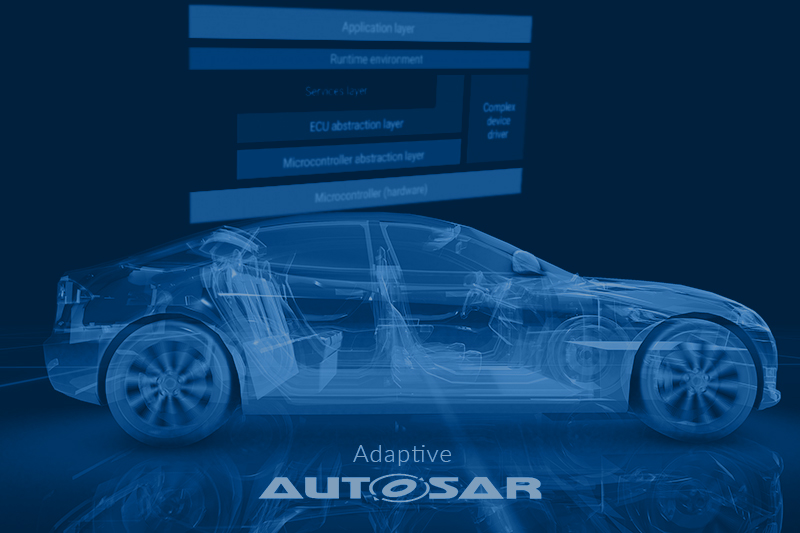
AUTOSAR Adaptive is a new course offered by the NIT Academy that was designed to help programmers stay ahead of the curve when it comes to developing software. The benefits of taking this course are numerous. Firstly, it will give you a deep understanding of the platform itself so that you can make informed decisions about your development projects. Secondly, as cars become more connected through technology such as 5G networks and autonomous driving, capabilities come online faster than ever before. Having knowledge on how these systems work together is essential for any programmer working on automotive applications today or tomorrow!
Finally, learning from experienced instructors gives students access to crucial industry insights that cannot be found elsewhere – something no traditional university class could provide them with.
This course provides an in-depth look at AUTOSAR, which stands for Automotive Open System Architecture, and how its principles can be used to create innovative automotive solutions. With this course, programmers will gain insight into current trends in vehicle engineering and learn how they can use AUTOSAR’s features to their advantage.
AUTOSAR Adaptive is an essential standard that enhances the functionality of software for next-generation vehicles. Autosar (Automotive Open System Architecture) is a standardization framework that provides a common architecture for integrating automotive electronics and software from various suppliers into a unified system. AUTOSAR Adaptive is an evolution of AUTOSAR that aims to provide a more flexible platform for developing and integrating software in modern vehicles.
We talked to NIT instructor Branislav Kordić and he told us that the value of something like this is beyond words.
“Due to the complexity of the software and the participation of various parties in the process of software design, development, testing, and finally maintenance, there was a need to standardize software in the automotive industry and hence the need for Autosar standards. There are two standards: AUTOSAR Classic and AUTOSAR Adaptive.
AUTOSAR Classic appeared first and its goal was standardization with focus on safety-relevant systems - and it truly did answer those challenges. However, in the last decade, there was a surge of applications used in automotive software, i.e. software that will be used within the car, such as ADAS systems - programs that are used for driving support (driving lane detection and tracking, valet parking, adaptive speed control systems etc.) - and infotainment systems. Such applications are extremely demanding on the processor power and are perfected and improved over time”.
Kordić says that we should allow those software applications to be improved and updated over time. Classic and AUTOSAR Adaptive do not intersect, yet complement each other.
“AUTOSAR Adaptive responds to those challenges. On the one hand, Classic had safety as its premise, and that has its own restrictions - everything had to be known in advance, applications are linked statically, along with a lot of things which primarily responds to safety aspects. On the other hand, for today's challenges that require a flexible architecture we have AUTOSAR Adaptive. Not only does it give us a platform and a methodology, but it also allows us to have dynamic addition of applications at any moment. While classic AUTOSAR applications are executed on MCUs (microcontrollers) AUTOSAR Adaptive applications are deployed on CPUs (center processor unit) equipped with more cores and resources which enable us to satisfy the most demanding application requirements”.
Even a year later, if an application update is requested while the vehicle is on the road, the update can be applied (for instance over-the-air update). We need an AUTOSAR Adaptive platform because it allows us such a capability and enables us to adapt to end-user needs and expectations.
Kordić says that before AUTOSAR Adaptive this was really challenging.
“In the case of classic autosar platform applications, their functionality is not changed after being deployed into vehicles - and they are designed and developed accordingly. However, with AUTOSAR Adaptive the premise is opposite, already deployed applications are continuously improved over the time. AUTOSAR Adaptive embraces flexible service oriented architecture which helps us to tackle that problem. Adaptive applications are represented as services within a particular functional cluster and every functional cluster has its own role in the system. Commonly, the adaptive environment is deployed in some kind of Unix based OS such as QNX. For us engineers this enables a new way of working - we can design and develop our applications with more commodity and freedom to exercise various software designs and algorithms”.
Kordić says that the NIT course stands out because it provides a unique hands-on experience using industry-relevant use cases.
“We tackle the most important platform services which differentiate AUTOSAR Adaptive from other platforms. Know-how and lessons learned from the training later can be applied to industry projects.”
AUTOSAR Adaptive is a critical standard for the future of automotive software. It provides a flexible and customizable platform for developing and integrating software for advanced features such as ADAS and infotainment systems. With its service-oriented architecture and POSIX compatibility, AUTOSAR Adaptive is well-equipped to handle the demanding requirements of modern vehicles.
In conclusion: NIT Academy's new AUTOSAR Adaptive course offers tremendous value for aspiring programmers looking forward to pursuing careers in automotive software development or related fields. By providing an opportunity for hands-on experience combined with expert instruction from leading professionals within their field – there really isn't anything else like it out there right now.



